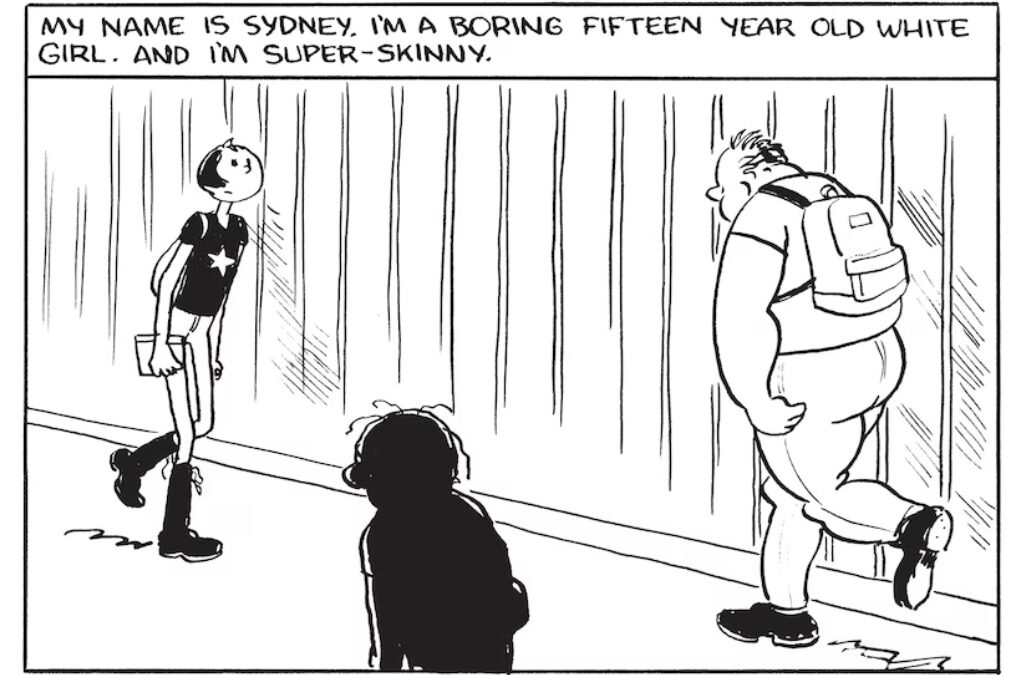The most unusual college in New England turns 20 this year. If it had been around a half-century ago I might well have attended.
The college is the Center for Cartoon Studies in White River Junction, Vt., across the Connecticut River from Lebanon. It offers a two-year Master of Fine Arts degree, a couple of certificate programs and a host of shorter labs and workshops.
CCS, as it’s often known, has between two- and three-dozen full-time, tuition-paying students, something like 150 folks paying to attend workshops during the year and thousands of kids going through the Cartoon Camp.
The Center just held a open house to celebrate its birthday and an ongoing consolidation into two repurposed buildings it has bought in the quirky little town: the old post office and old telegraph office.
It seems to be weathering the demographic, financial and political storms battering colleges, presumably because of its unique niche: So far as I can tell it’s the only degree-granting institution in the country devoted entirely to the art, craft and business of what it calls the “drawn story.” Two alumni have had their comics turned into Netflix series and the school has received support, including lectures, from names like Art Spiegelman of “Maus” fame and New Yorker favorite Roz Chast.
“You’re writing with pictures, you’re not just illustrating text,” said James Sturm, a co-founder of the school, describing the school’s approach. “It’s not like, ‘Here’s the writing class, here’s the illustration class, now put them together.’ There’s not a distinction between the two… You think it’s writing and drawing, but with comics, it’s more poetry and graphic design, if I had to go out with two mediums.”
I might have attended CCS back in the day because my only job on my college newspaper was to draw the comic strip, spurred by dreams of creating the next “Doonesbury.” (Spoiler alert: That didn’t happen.) There was nothing odd back then moving between pen-and-ink work on a draftable table and keyboard clicking in the computer lab, and there’s nothing odd about having a geek/cartooning nexus today.
“I love that we’re part of a greater geek community,” said co-founder Michelle Ollie.
Many cartoonists, she said, “are self-proclaimed tech geeks” comfortable using digital tools as well as analog ones. And that goes for the audience, too; the stereotype of comic-book shops filled solely with geeks is only partly an exaggeration.
This ethos has long been visible in the CCS study body, Ollie said. It regularly features people who come from traditional fine arts backgrounds or commercial design with the idea of using their skills in a different genre, but the student body is also full of folks who come just because they love comics, or graphic novels or anime and want to create it themselves.
‘Some people that attend, come in from a very strong fan base,” she said.
My cartoon dreams fizzled out when I realized the big difference between doodling amusing pictures and creating interesting characters within a coherent world. And while newspaper comic strips have mostly fizzled out since then, too, the world of drawn stories has otherwise expanded enormously.
Web comics are thriving, anime has taken over the cultural world, comic books have been boosted by movie spin-offs and, perhaps most interestingly, graphic novels have grown to become a widespread part of literature.
“There’s been an increase of graphic novels on bookshelves, almost at the point where they can’t get them on the shelf quick enough and in every genre imaginable,” said Ollie. “Non-fiction comics have really grown.”
Traditional literati bemoan this trend as a dumbing down, and as a person whose salary depends on people reading words, I am sympathetic to that point of view.
But in the end, communication is communication. Pictures, text, songs, dance, shadow puppets — whatever works for you is legit, even if it might not work for me.
As for CCS, moving from a lot of leased properties — some being basements, a wet place to exist in today’s heavy rainfall world — to a pair of buildings that they own seems to bode for a healthy future. Whether geeky or otherwise.
“We have students that aspire to do daily comics strips, New Yorker comics, graphic novels, fantasy, historical fiction, manga-inspired work,” said Sturm. “We’re not teaching a genre, we’re teaching a language. The language of comics.”


 Return to the Concord Monitor
Return to the Concord Monitor